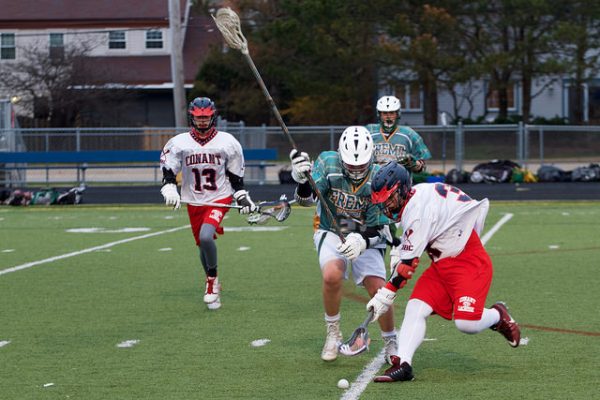
During his Supreme Court confirmation hearings, Brett Kavanaugh repeatedly referred to his experiences in high school and high school athletics in ways that depicted sports as wholesome and beneficial for youth. While not denying the benefits of sports, sociological research highlights the detrimental impacts of athletic involvement as well. And in contrast to Kavanaugh’s characterizations, this research shows that athletic participation is often associated with substance use and abuse, violence, and risk-taking among boys and young men in the United States.
The connection between athletic involvement and alcohol use is well-established through research, and the connection is especially pronounced for white male athletes at the top of their peer status hierarchy. Ironically, being high-status in high school drives both alcohol use and some of the protective features of sports, like connection to school and higher grades. Nationally representative surveys have also demonstrated that involvement in organized sports is associated with binge drinking in college, and that binge drinking continues after actual athletic participation ends. Recent work on drug use indicates that male athletes are more likely to be prescribed opioids, accidentally overdose, and have used opioids recreationally than non-athletes or female athletes.
- David Eitle, R. Jay Turner, and Tamela McNulty Eitle. 2003. “The Deterrence Hypothesis Reexamined: Sports Participation and Substance Use among Young Adults.” Journal of Drug Issues 33(1): 193–221.
- Matthew Kwan, Sarah Bobko, Guy Faulkner, Peter Donnelly, and John Cairney. 2014. “Sport Participation and Alcohol and Illicit Drug Use in Adolescents and Young Adults: A Systematic Review of Longitudinal Studies.” Addictive Behaviors 39(3): 497-506.
- Kyle Green, Toben Nelson, and Douglas Hartmann. 2014. “Binge Drinking and Sports Participation in College: Patterns among Athletes and Former Athletes.” International Review for the Sociology of Sport 49(3–4): 417-34.
- Philip Veliz, Carol Boyd, and Sean Esteban McCabe. 2017. “Nonmedical Use of Prescription Opioids and Heroin Use Among Adolescents Involved in Competitive Sports.” Journal of Adolescent Health 60(3): 346-49.
Classics in the field of sport sociology discuss the “Triad of Violence” that is taught through sports: 1) violence against women, 2) violence against others, and 3) violence against the self. For example, male athletes learn to play through pain and to talk about (heterosexual) sex as a conquest. More recent research continues to find links between sports and violent behavior, especially for contact sports. Since risk-taking is central to both the meaning of sport and the meaning of masculinity, it is not surprising that male athletes are more likely to engage in a variety of “risk-taking” behaviors, from drunk driving to unprotected sex.
- Michael Messner. 2002. Taking the Field: Women, Men, and Sports. University of Minnesota Press.
- Kevin Beaver, J.C. Barnes, and Brian Boutwell. 2016. “Exploring the Relationship between Violent Behavior and Participation in Football during Adolescence: Findings From a Sample of Sibling Pairs.” Youth & Society 48(6): 786–809.
- Jeffrey Kidder. 2017. Parkour and the City: Risk, Masculinity, and Meaning in a Postmodern Sport. Rutgers University Press.
For other work on how masculinity norms in sport link to sexuality and race, see here!

Comments